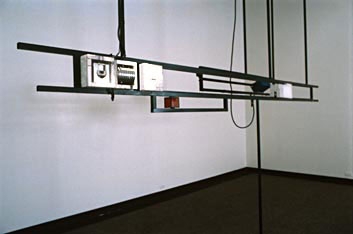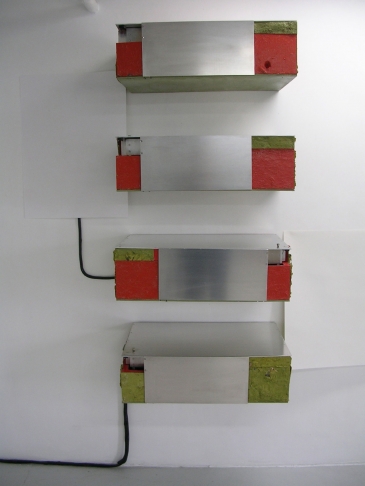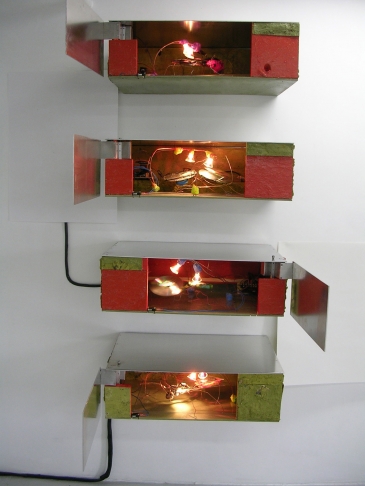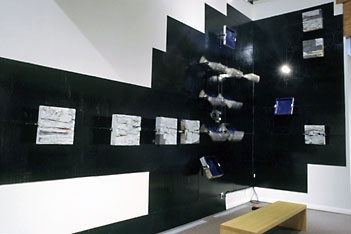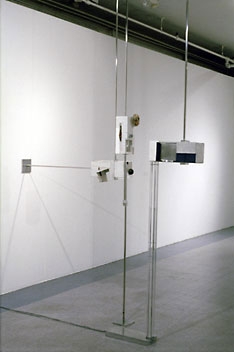Collaboration-Anticipating the of future
2008.07.11~2008.08.31
09:00 - 17:00
For Mary Sherman, collaboration not only provides hands-on opportunities for understanding and sharing ideas and cultural mindsets, but collaborative work is arguably - as our world becomes increasingly interconnected - the wave of the future. From May 11 to July 13, as an artist-in-residence at the Kuandu Museum of Fine Arts and Fulbright Senior Scholar, Ms. Sherman presented lectures on the history of collaboration in American art and worked with the Taipei National University of the Arts’ students and faculty to create this exhibition of collaborative art.Each work grew out of talks, workshops and meetings between the five teams of artists from diverse disciplines and backgrounds. The aim of the process was to expand the artist’s traditional studio practice beyond that of a physically isolated, geographically specific and historically limited enterprise in order to promote cross-fertilization, and new ways of thinking about art in the 21st century. Not surprisingly some of the themes that arose from the process was a desire to communicate in a world in which connections are both easier and more difficult; a sense of fragmentation and longing; and quest for new images that reflect meaning in a world in which universal truths seems harder and harder to find. Thus, to express their group's ideas, Team B has created a lone telephone booth that they will call, hoping the museum visitors will answer their ringing plea to connect to them. Team A has generously provided viewers with what seems to be blank frames; but in actuality are moveable reflections of worlds that we can create ourselves. Team D offers us the sky where we can project our own desires; Team E has constructed an abstracted choreography where the individual elements can never really meet, but only reflect one another in passing; and, finally, Team C describes our fragmented world through disembodied voices. The fruits of their labors are shown here.
For Mary Sherman, collaboration not only provides hands-on opportunities for understanding and sharing ideas and cultural mindsets, but collaborative work is arguably - as our world becomes increasingly interconnected - the wave of the future. From May 11 to July 13, as an artist-in-residence at the Kuandu Museum of Fine Arts and Fulbright Senior Scholar, Ms. Sherman presented lectures on the history of collaboration in American art and worked with the Taipei National University of the Arts’ students and faculty to create this exhibition of collaborative art.Each work grew out of talks, workshops and meetings between the five teams of artists from diverse disciplines and backgrounds. The aim of the process was to expand the artist’s traditional studio practice beyond that of a physically isolated, geographically specific and historically limited enterprise in order to promote cross-fertilization, and new ways of thinking about art in the 21st century. Not surprisingly some of the themes that arose from the process was a desire to communicate in a world in which connections are both easier and more difficult; a sense of fragmentation and longing; and quest for new images that reflect meaning in a world in which universal truths seems harder and harder to find. Thus, to express their group's ideas, Team B has created a lone telephone booth that they will call, hoping the museum visitors will answer their ringing plea to connect to them. Team A has generously provided viewers with what seems to be blank frames; but in actuality are moveable reflections of worlds that we can create ourselves. Team D offers us the sky where we can project our own desires; Team E has constructed an abstracted choreography where the individual elements can never really meet, but only reflect one another in passing; and, finally, Team C describes our fragmented world through disembodied voices. The fruits of their labors are shown here.
